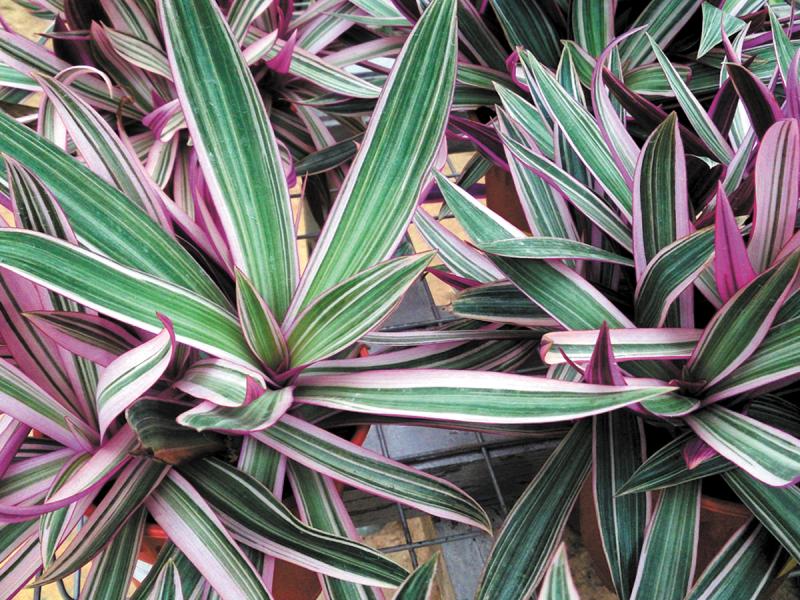A neurological phenomenon is that many people who stutter are very often perfectly fluent when speaking in front of an audience. So we are surprised when we learn that Bruce Willis, James Earl Jones and Nicole Kidman all stutter. But what if your audience was God? As the first abandoned child mentioned in the Bible, Moses was set adrift among the bulrushes, and later as an adult he begged God not to make him his spokesman because he stuttered.
Out of the bulrushes and into your living room – you can grow your own version of a baby adrift with the Moses in the Cradle plant (Tradescantia spathacea). Its name comes from the tiny white flowers that lie inside a purple boat-shaped leaf. It is also known as boat lily, cradle lily or oyster plant. This is a large plant that will eventually grow a foot tall and two feet across.
Moses survived 40 days without food, and his namesake plant can put up with a bit of neglect. Moses in the Cradle plants do need bright, indirect light such as an east-facing window. Avoid windowsills or tables that get direct sunlight, because this will burn the leaves. When the plant is put where there isn't bright light, the leaves may fade from purple to green. If it is too hot and dry, it can attract spider mites. You fight these with a safe insecticidal soap spray.
Let the top inch of soil dry out before watering. In the winter when growth slows down, you can let the soil stay a bit drier. Once spring hits, your Moses in the Cradle plant will benefit from monthly feeding with a good liquid houseplant fertilizer (10-10-10) diluted to half strength.
Because Moses in the Cradle prefers high humidity, you can set the pot on a tray filled with pebbles and just enough water to cover the sides of the pebbles. This way as the water evaporates, it will increase the humidity around the plant. Be careful that the pot is not in direct contact with the water. To keep your plant bushy and attractive, prune heavily every spring.
You might want to wear gloves when taking cuttings or pruning Moses in the Cradle because the sap is mildly toxic. This is also a good reason to keep the plants away from children and pets.
After a few years, you will want to repot your Moses in the Cradle. Choose a pot just one size larger and use a rich, well-draining potting soil. Be sure the new pot has drainage holes; otherwise constantly moist soil will cause root rot. Because Moses in the Cradle is easy to propagate from cuttings, you can share it with friends. Just dip the cutting in rooting hormone powder and keep it moist.
And the next time you hear someone stutter, do not interrupt or try to finish their sentence. After all, they may have just spoken with God.





















































